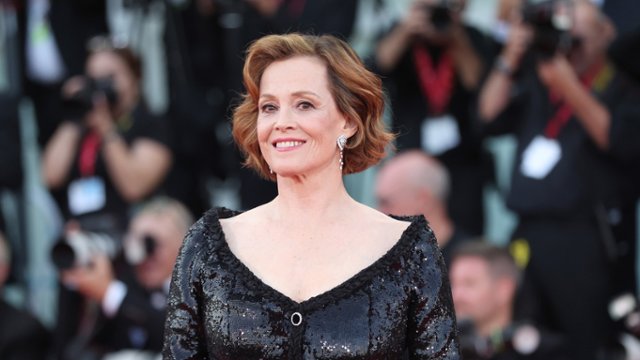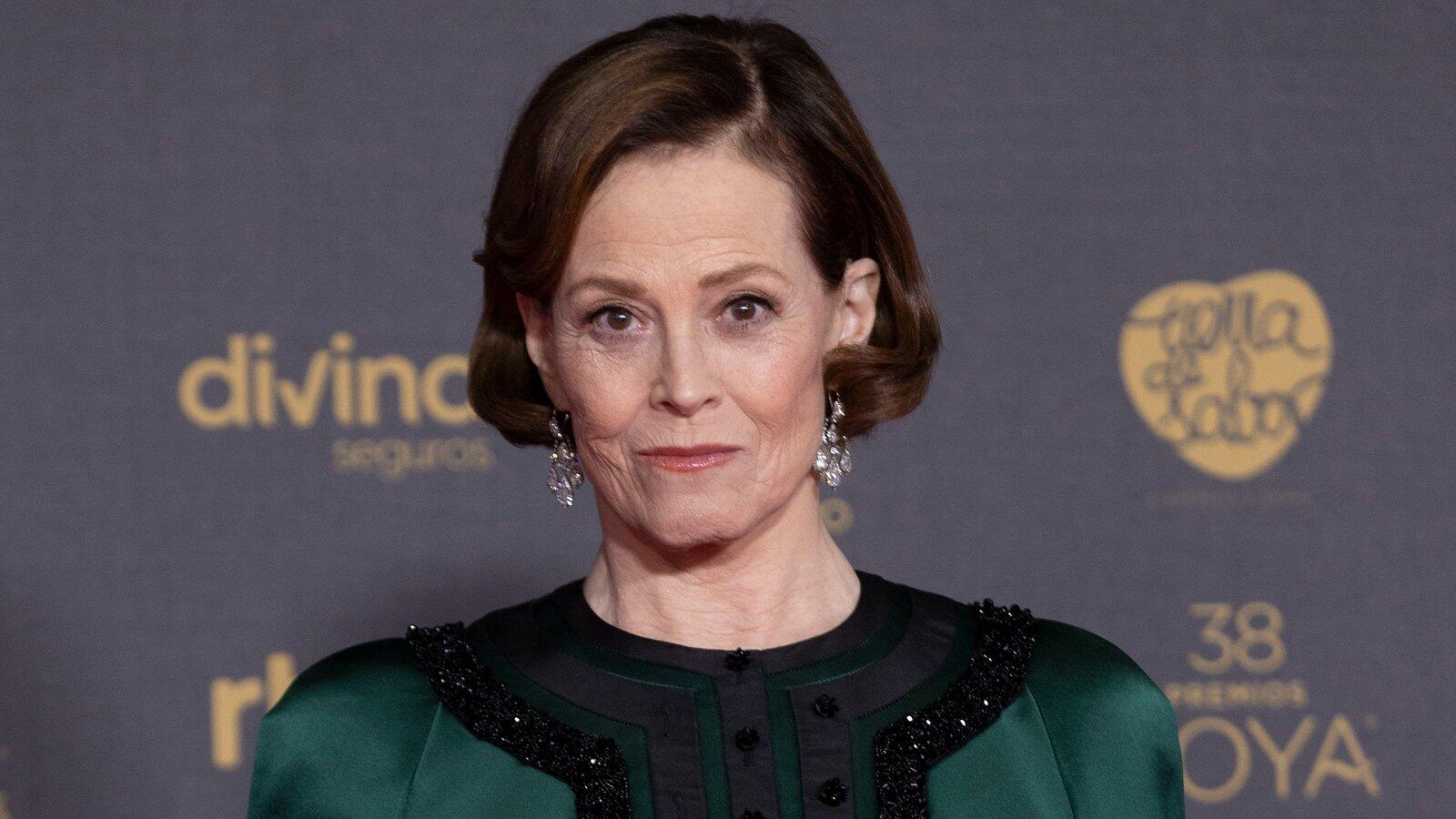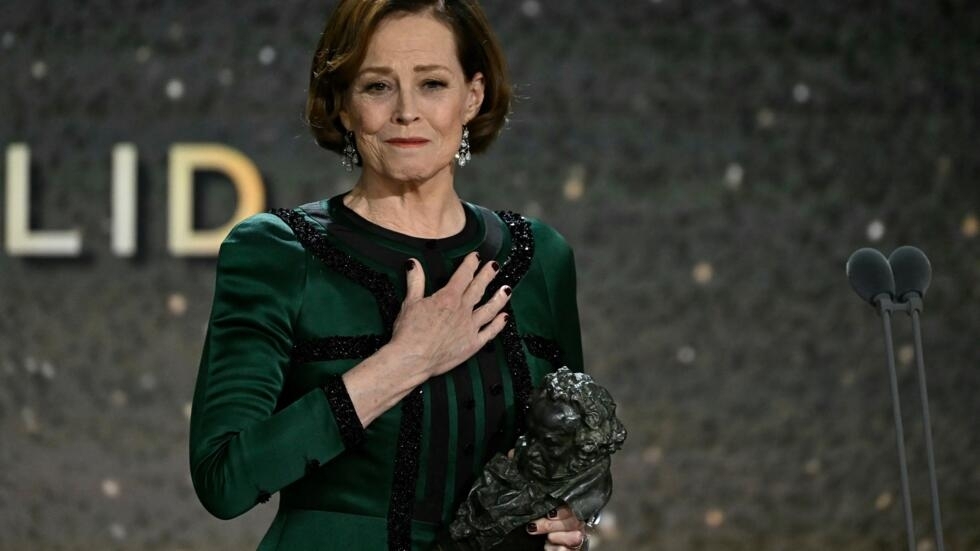Sigourney Weaver is a name synonymous with groundbreaking performances, fearless roles, and powerful advocacy.
Yet beneath her Hollywood stardom lies a fascinating story of struggle, defiance, and resilience that many fans might not know.
Born Susan Alexandra Weaver on October 8, 1949, Sigourney grew up in the shadows of famous parents.
Her father, Pat Weaver, revolutionized television by creating iconic shows like The Today Show and The Tonight Show, while her mother, Elizabeth Inglis, was a celebrated actress known for Alfred Hitchcock’s The 39 Steps (1935).
Despite this glamorous heritage, Sigourney often felt isolated, describing her childhood as lonely and overlooked. She felt disconnected, once saying she felt like “a little girl in a big house with no one to talk to.”
Seeking her own identity, Sigourney eventually chose her unique name from a character in F. Scott Fitzgerald’s The Great Gatsby, hoping it would give her strength and presence.

Standing 5’11” by the sixth grade, Weaver faced bullying for her height, with peers cruelly nicknaming her “the giant spider.” But embracing her distinctive new name changed everything, giving her a sense of identity that later proved pivotal in Hollywood auditions.
Initially uninterested in pursuing acting, Weaver studied English literature at Stanford University, leading an unconventional college life—living in a treehouse, playing the flute, and dressing in elf costumes.
It was only after graduation, during a transformative trip to Israel, that she realized her passion for storytelling. Returning home, she enrolled in Yale School of Drama.
At Yale, Weaver faced further setbacks. Professors openly doubted her talent, assigning her humiliating roles that felt inappropriate for a young actress.
One even bluntly advised her to quit acting altogether. However, Weaver’s determination only intensified. Teaming up with fellow outsider Christopher Durang, she began performing bizarre, provocative plays, blending absurdity with sharp emotional performances.

Their edgy style, especially in productions like Titanic (1976) and Das Lusitania Songspiel, drew attention, catching the eye of director Warren Beatty and Broadway legend Mike Nichols.
Her breakthrough role came unexpectedly. Weaver briefly appeared for only six seconds in Woody Allen’s Annie Hall (1977), standing silently in the background. Despite the fleeting screen time, casting director Juliet Taylor remembered her and recommended her for Alien (1979).
Landing the role of Ellen Ripley wasn’t easy. Hollywood executives initially rejected the idea of a female lead battling extraterrestrial monsters. Legendary actress Meryl Streep and Glenn Close were also contenders, but director Ridley Scott saw something special in Weaver.
Determined to make her believable as a tough survivor, Scott insisted she train with ex-Marines, pushing back against studio skepticism.
Alien not only made Weaver a star but also revolutionized female roles in science fiction. Her portrayal of Ellen Ripley—a smart, resilient survivor—challenged Hollywood stereotypes.
Audiences and critics alike praised her groundbreaking performance, yet Hollywood still underpaid her compared to male counterparts. Co-star John Hurt received $250,000 while Weaver earned just $35,000.
Weaver’s Oscar nomination for Aliens (1986) marked a historic shift in Hollywood, proving sci-fi could earn critical acclaim.
Though she didn’t win, her nomination paved the way for future recognition of women in action and sci-fi roles, indirectly supporting later successes like Sandra Bullock’s Gravity.
Yet, Weaver sought to avoid typecasting. Rejecting lucrative roles in films like Total Recall and The Silence of the Lambs, she instead pursued diverse roles, winning acclaim and multiple awards.

Remarkably, in 1989, she became the first actor ever to win two Golden Globes in one night—for her vastly different performances in Gorillas in the Mist and Working Girl.
Weaver’s dedication was evident in Gorillas in the Mist, where she immersed herself completely, studying gorilla behavior and even enduring dangerous filming conditions in Rwanda.
Contrastingly, in Working Girl, she skillfully embodied a ruthless corporate executive, further showcasing her versatility.
Despite earlier disappointments, Weaver returned to the Alien franchise for Alien 3 (1992), demanding narrative depth over spectacle.
Unfortunately, studio interference turned production into chaos. Original, ambitious scripts were discarded, replaced with rushed rewrites and creative conflicts.
Director David Fincher fought constant battles with executives, and Weaver struggled against sexist attitudes and resistance from the male-dominated studio environment. Yet, she fiercely defended Fincher’s creative vision, even though Alien 3 ultimately disappointed many fans and critics.
Her portrayal of Ripley’s emotional exhaustion and sacrifice in Alien 3 is now seen as courageous and profound, and the film has since gained a dedicated following.

Weaver’s final Alien appearance, Alien Resurrection (1997), saw her portraying a cloned, hybridized Ripley. Critics initially derided the film’s strange approach, but Weaver embraced its eccentricity.
One memorable unscripted scene involved her flawlessly executing a backward basketball shot, stunning the entire cast and crew on set. Her powerful presence gave credibility to the movie’s unconventional vision.
Post-Alien, Weaver staunchly refused involvement in spin-offs like Alien vs. Predator, determined to protect Ripley’s legacy from commercialization.
Her brief return to the character in the acclaimed video game Alien: Isolation (2014) reunited her with the original cast and reclaimed the franchise’s roots in horror and survival.
Weaver continued breaking boundaries in her later career. Astonishingly, at 61, she portrayed a teenage character in James Cameron’s Avatar: The Way of Water, drawing praise for her remarkably authentic performance without relying heavily on digital enhancement.
Similarly, her chilling performance as Alexandra Reid in Marvel’s The Defenders proved her willingness to reinvent herself continuously, demonstrating her enduring relevance.
Off-screen, Weaver has long been a committed advocate for important social and environmental causes.

She passionately supports gorilla conservation through the Dian Fossey Gorilla Fund, environmental awareness as a UN Goodwill Ambassador, and even opened her home to refugees during the COVID-19 pandemic.
She’s been equally dedicated to promoting gender equality and confronting Hollywood sexism, openly challenging pay disparities and supporting younger actresses.
Weaver often criticized Hollywood’s mistreatment of women, highlighting inequalities even as she rose to the top.
Now 75, Weaver remains active, recently captivating audiences with her youthful portrayal of Kiri, a Na’vi teenager, in Avatar: The Way of Water, demonstrating her unparalleled ability to transform entirely into any character.
Her marriage to director Jim Simpson, lasting over 40 years—a rarity in Hollywood—has provided stability amidst her adventurous career. Together, they raised their child, Char, who now teaches AI and digital storytelling at Columbia University.
Sigourney Weaver’s extraordinary career—marked by perseverance, innovation, and integrity—has left an indelible mark on Hollywood.
From her groundbreaking role as Ripley to her diverse performances across genres and powerful advocacy off-screen, Weaver has reshaped what it means to be a woman in entertainment.
Her legacy isn’t simply defined by her famous roles but by the strength, resilience, and courage she’s shown both on and off camera.


